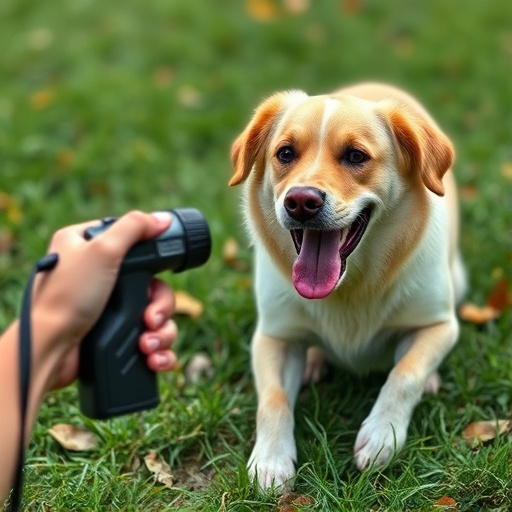In recent years, pepper spray tailored for aggressive dogs has emerged as a crucial tool for mail carriers' self-defense against increasingly dangerous canine encounters. This non-lethal solution utilizes capsaicin, the active irritant in chili peppers, to temporarily incapacitate dogs without permanent harm. Formulations are optimized for rapid deployment and safe use, requiring proper training and responsible application techniques. By implementing this strategy, mail carriers can enhance their safety while delivering essential services in high-risk areas populated by aggressive dog breeds.
In recent years, there has been a growing interest in using pepper spray as a deterrent against aggressive dogs. This article delves into the need for such a solution, exploring the science behind its formulation and the responsible implementation of pepper spray to protect mail carriers and others from potential dog bites. We’ll discuss how this innovative approach offers a safe and effective method to mitigate risks associated with encountering hostile canines.
- Understanding the Need for Pepper Spray for Dog Bite Prevention
- The Science Behind Pepper Spray Formulation
- Implementation and Safety Measures: Using Pepper Spray Responsibly
Understanding the Need for Pepper Spray for Dog Bite Prevention
In recent years, there’s been a growing recognition of the need for pepper spray as an essential tool in dog bite prevention. This shift is driven by the increasing encounters between mail carriers and potentially aggressive dogs, often unprovoked and unexpected. The traditional methods of deterrence have proven insufficient against certain breeds known for their ferocity when threatened or startled.
Pepper spray formulations specifically designed to subdue aggressive dogs offer a non-lethal solution. These specialized sprays utilize capsaicin, the active ingredient in chili peppers, which irritates the eyes and respiratory system, temporarily incapacitating the dog without causing permanent harm. This tool provides mail carriers with a means of self-defense and a way to defuse potentially dangerous situations, ensuring their safety while they deliver essential services.
The Science Behind Pepper Spray Formulation
The science behind pepper spray formulation, specifically designed against aggressive dogs, is a carefully crafted blend of active ingredients aimed at neutralizing and deterring canine assailants. Key components include capsaicin, the primary irritant found in chili peppers, and various additives that enhance its effectiveness while minimizing risk to humans and other animals.
This potent compound disrupts an animal’s sensory system by binding to specific receptors in the nose and eyes, causing a burning sensation and temporary blindness. The formulation is optimized for rapid deployment and long-lasting efficacy, ensuring mail carriers can defend themselves effectively during encounters with aggressive dogs.
Implementation and Safety Measures: Using Pepper Spray Responsibly
Implementing pepper spray as a mail carrier defense mechanism against aggressive dogs requires careful consideration and responsible usage. It’s crucial to understand that pepper spray is designed for law enforcement and self-defense scenarios, not everyday situations like delivering mail. Therefore, strict safety measures must be in place. Mail carriers should undergo proper training on how and when to deploy the spray, focusing on de-escalation techniques first.
The pepper spray formulation against aggressive dogs needs to be potent yet controlled, aiming for a temporary incapacitation without causing severe harm. It’s essential to use non-lethal force as a last resort, ensuring that the spray is used in open areas where ventilation is good to minimize exposure for both the carrier and the dog. Regular maintenance and expiration checks of the pepper spray equipment are vital to guarantee its effectiveness and safety.
In conclusion, pepper spray formulation against aggressive dogs offers a non-lethal solution for mail carriers and others at risk of dog bites. Understanding the science behind its effectiveness and implementing responsible usage practices, as outlined in this article, can enhance safety while ensuring the humane treatment of canines. By armeding ourselves with this tool, we can navigate interactions with potentially dangerous dogs more confidently, promoting a safer environment for both people and pets.
